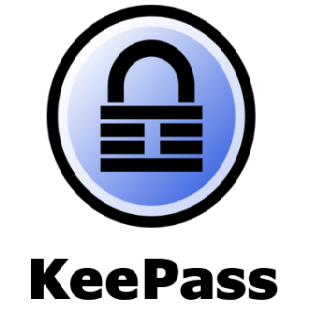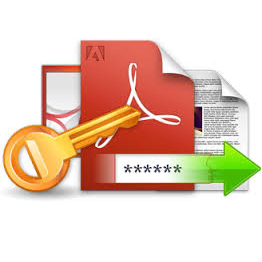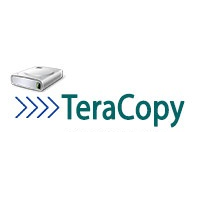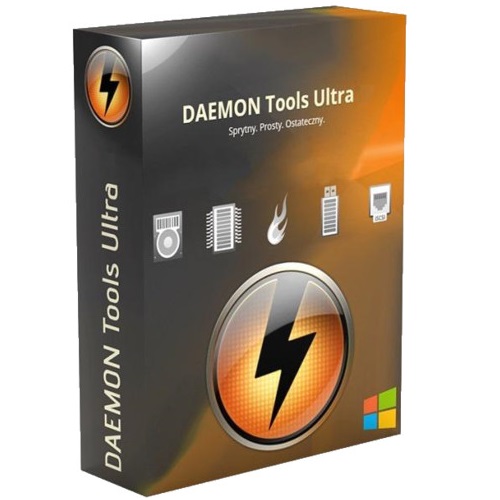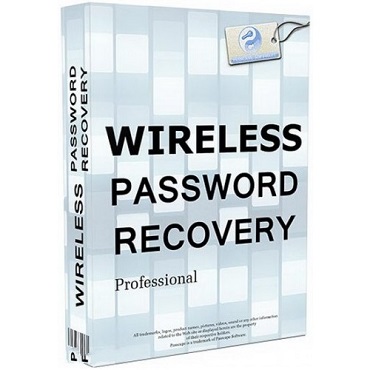Download VMware vCenter Server 8 full version program free setup for Windows. Gain centralized visibility, simplified and efficient management at scale, and extensibility across the hybrid cloud—all from a single console. VMware vCenter Server is advanced server management software that provides a centralized platform for controlling your VMware vSphere environments, allowing you to automate and deliver a virtual infrastructure across the hybrid cloud with confidence.
VMware vCenter Server Overview
VMware vCenter Server is a powerful and essential component of the VMware vSphere virtualization platform. It serves as a centralized management tool that enables administrators to effectively control and monitor their virtualized infrastructure. With vCenter Server, users can manage multiple ESXi hosts and their associated virtual machines from a single interface, streamlining the management process and enhancing overall efficiency. One of the key features of VMware vCenter Server is its ability to provide a comprehensive view of the virtual environment. Administrators can access real-time information on resource utilization, performance metrics, and the health of virtual machines and hosts. This visibility allows for proactive monitoring and helps in identifying and resolving potential issues before they escalate, ensuring optimal performance and reliability of the virtualized environment. Another significant aspect of vCenter Server is its role in enabling advanced features like vMotion and Distributed Resource Scheduler (DRS). These features allow for seamless migration of virtual machines between different hosts and automatic load balancing across the virtual infrastructure, respectively. This dynamic resource allocation ensures efficient utilization of resources and helps in achieving high availability and resilience. You may also like EFI Boot Editor Free Download

Moreover, VMware vCenter Server facilitates easy provisioning and management of virtual machines. Through its intuitive interface, administrators can quickly deploy new VMs, clone existing ones, or create templates for standardized deployments. This automation reduces the time and effort required for manual configurations, leading to enhanced productivity and faster response times. Security is a paramount concern for any IT infrastructure, and vCenter Server addresses this with robust access control and permissions management. Administrators can assign different levels of access rights to users, ensuring that only authorized personnel have the ability to make changes to critical settings and configurations. In recent years, VMware has also extended vCenter Server’s capabilities to integrate with cloud services, enabling seamless management of hybrid cloud environments. This integration provides users with the flexibility to manage and migrate workloads between their on-premises data centers and public cloud platforms, all from the same familiar vCenter interface.

In conclusion, VMware vCenter Server plays a pivotal role in simplifying the management and administration of virtualized environments. Its centralized approach, performance monitoring, automation, and security features make it an indispensable tool for organizations seeking to optimize their virtual infrastructure and deliver high-quality services with maximum efficiency.
Features
- Centralized Management: vCenter Server acts as a centralized management platform, allowing administrators to control multiple ESXi hosts and virtual machines from a single interface.
- Resource Monitoring: It provides real-time monitoring of resource utilization, performance metrics, and health status of VMs and hosts, enabling proactive management and issue resolution.
- vMotion: vCenter Server supports vMotion, which allows live migration of virtual machines from one host to another without any downtime, ensuring optimal resource allocation and minimizing disruptions.
- Distributed Resource Scheduler (DRS): This feature automatically balances workloads across hosts in a cluster, optimizing resource distribution and maintaining high performance levels.
- High Availability (HA): vCenter Server offers HA, which automatically restarts VMs on a different host in the event of a host failure, enhancing the overall availability of virtualized workloads.
- Storage vMotion: With Storage vMotion, administrators can move virtual machine disk files between datastores without incurring any downtime, enabling seamless storage maintenance and migration.
- Template Management: vCenter Server allows users to create VM templates, simplifying the process of deploying new VMs with pre-configured settings and software packages.
- Snapshot Manager: Administrators can use snapshots to capture the current state of a VM, enabling quick and easy rollbacks to previous configurations if needed.
- Distributed Switches: vCenter Server supports Distributed Virtual Switches, enabling centralized network management with consistent networking policies across multiple hosts.
- VM Encryption: vCenter Server provides encryption for virtual machines, enhancing data security and privacy.
- Distributed Power Management (DPM): DPM automatically powers off hosts during periods of low demand and powers them back on when needed, reducing power consumption and costs.
- Role-Based Access Control (RBAC): Administrators can define fine-grained access control and assign roles to users, ensuring that permissions are aligned with organizational needs.
- Alarm Management: vCenter Server enables the creation of alarms based on specified thresholds, notifying administrators of potential issues or deviations from predefined conditions.
- Content Library: This feature allows users to store, share, and synchronize VM templates, ISO images, and scripts across multiple vCenter Server instances.
- vCenter Server Linked Mode: Administrators can link multiple vCenter Server instances together, providing a unified view and enabling cross-vCenter migrations and management.
- Fault Tolerance (FT): FT ensures continuous availability of VMs by creating a duplicate VM on another host, providing instant failover in case of a host failure.
- Storage Policies: Storage policies allow administrators to define and apply specific data service levels to virtual machines based on storage capabilities.
- vCenter Server REST API: vCenter Server exposes a RESTful API, allowing developers to automate tasks and integrate vCenter functionalities into custom applications.
- Custom Attributes: Custom attributes enable administrators to add metadata to VMs, facilitating organization and classification for easier management.
- vCenter High Availability (vCHA): Provides a built-in high availability solution for vCenter Server itself, ensuring the vCenter service is available even in the event of a vCenter host failure.
- vSphere Update Planner: Helps administrators plan and manage the update and upgrade process for vCenter Server and the vSphere environment.
- vSphere Lifecycle Manager (vLCM): vLCM simplifies lifecycle management by providing a single interface for managing patches, updates, and upgrades for vSphere components.
- Content Library Cross-vCenter Publishing: Enables content libraries to be published across multiple vCenter Server instances for better content distribution and management.
- Network-Aware DRS: Incorporates network bandwidth utilization into DRS calculations, optimizing VM placement based on both compute and network resources.
- vSphere Distributed Power Management (DPM) Scaling: Allows vSphere DPM to scale to larger clusters, increasing the number of supported hosts for power management.
- VM Hardware Version Upgrade: Allows easy upgrading of VM hardware versions to take advantage of new features and enhancements.
- vCenter Server File-Based Backup and Restore: Provides an integrated backup and restore mechanism for vCenter Server, simplifying disaster recovery.
- Content Library Scalability Enhancements: Improves content library performance and scale for large-scale environments.
- vSphere Quick Boot: Reduces the time required for host reboots by skipping hardware initialization during restarts.
- vCenter Server Hybrid Linked Mode: Allows users to link vCenter Server instances between on-premises and VMware Cloud on AWS, providing a seamless hybrid cloud management experience.
- vCenter Server Converge Tool: Simplifies the process of migrating from an external Platform Services Controller (PSC) deployment to an embedded PSC configuration.
- Proactive High Availability (Proactive HA): Monitors and manages hardware components to ensure hosts are in a healthy state and automatically evacuates VMs from hosts with failing hardware.
- vSphere Distributed Switch (VDS) Port Mirroring: Enables traffic monitoring by replicating network traffic from a source port to a destination port for analysis purposes.
- Enhanced Linked Mode: Improves scalability and performance for linked vCenter Server deployments.
- Kubernetes Cluster Management: Integrates Kubernetes cluster lifecycle management and monitoring into vCenter Server, making it easier to deploy and manage Kubernetes clusters.
- Scalability Improvements: Enhancements to vCenter Server’s scalability, supporting larger environments with more hosts, VMs, and vCenter Server instances.
- Enhanced vMotion Compatibility (EVC): Simplifies the movement of VMs between hosts with different processor generations, ensuring compatibility and seamless migration.
- vCenter Server Health Monitoring: Monitors the health and performance of vCenter Server, providing insights into its operational status.
- vSphere Clustering Service (VCLS): A new service architecture that enhances the reliability and availability of vCenter Server.
Technical Details
- Software Name: VMware vCenter Server for Windows
- Software File Name: VMware-vCenter-Server-8.0.1.rar
- Software Version: 8.0.1
- File Size: 8.16 GB
- Developers: vmware
- File Password: 123
- Language: Multilingual
- Working Mode: Offline (You donÆt need an internet connection to use it after installing)
System Requirements
- Operating System: Win 7, 8, 10, 11
- Free Hard Disk Space:
- Installed Memory: 1 GB
- Processor: Intel Dual Core processor or later
- Minimum Screen Resolution: 800 x 600
What is the latest version of VMware vCenter Server?
The developers consistently update the project. You can view the most recent software update on their official website.
Is it worth it to install and use Software VMware vCenter Server?
Whether an app is worth using or not depends on several factors, such as its functionality, features, ease of use, reliability, and value for money.
To determine if an app is worth using, you should consider the following:
- Functionality and features: Does the app provide the features and functionality you need? Does it offer any additional features that you would find useful?
- Ease of use: Is the app user-friendly and easy to navigate? Can you easily find the features you need without getting lost in the interface?
- Reliability and performance: Does the app work reliably and consistently? Does it crash or freeze frequently? Does it run smoothly and efficiently?
- Reviews and ratings: Check out reviews and ratings from other users to see what their experiences have been like with the app.
Based on these factors, you can decide if an app is worth using or not. If the app meets your needs, is user-friendly, works reliably, and offers good value for money and time, then it may be worth using.
Is VMware vCenter Server Safe?
VMware vCenter Server is widely used on Windows operating systems. In terms of safety, it is generally considered to be a safe and reliable software program. However, it’s important to download it from a reputable source, such as the official website or a trusted download site, to ensure that you are getting a genuine version of the software. There have been instances where attackers have used fake or modified versions of software to distribute malware, so it’s essential to be vigilant and cautious when downloading and installing the software. Overall, this software can be considered a safe and useful tool as long as it is used responsibly and obtained from a reputable source.
How to install software from the WinRAR file?
To install an application that is in a WinRAR archive, follow these steps:
- Extract the contents of the WinRAR archive to a folder on your computer. To do this, right-click on the archive and select ”Extract Here” or ”Extract to [folder name]”.”
- Once the contents have been extracted, navigate to the folder where the files were extracted.
- Look for an executable file with a .exeextension. This file is typically the installer for the application.
- Double-click on the executable file to start the installation process. Follow the prompts to complete the installation.
- After the installation is complete, you can launch the application from the Start menu or by double-clicking on the desktop shortcut, if one was created during the installation.
If you encounter any issues during the installation process, such as missing files or compatibility issues, refer to the documentation or support resources for the application for assistance.
Can x86 run on x64?
Yes, x86 programs can run on an x64 system. Most modern x64 systems come with a feature called Windows-on-Windows 64-bit (WoW64), which allows 32-bit (x86) applications to run on 64-bit (x64) versions of Windows.
When you run an x86 program on an x64 system, WoW64 translates the program’s instructions into the appropriate format for the x64 system. This allows the x86 program to run without any issues on the x64 system.
However, it’s important to note that running x86 programs on an x64 system may not be as efficient as running native x64 programs. This is because WoW64 needs to do additional work to translate the program’s instructions, which can result in slower performance. Additionally, some x86 programs may not work properly on an x64 system due to compatibility issues.
What is the verdict?
This app is well-designed and easy to use, with a range of useful features. It performs well and is compatible with most devices. However, may be some room for improvement in terms of security and privacy. Overall, it’s a good choice for those looking for a reliable and functional app.
Download VMware vCenter Server 8 Latest Version Free
Click on the button given below to download VMware vCenter Server free setup. It is a complete offline setup for Windows and has excellent compatibility with x86 and x64 architectures.


